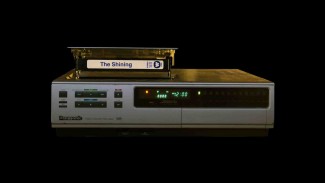‘Room 237’ takes a trip back to the Overlook Hotel, over and over again

The Shining makes you think. There’s no doubt about it. Stanley Kubrick’s masterful horror film is a genre staple by being completely different than anything else in the genre. Jack Nicholson turns in perhaps his most menacing role, with ample supporting help from Shelley Duvall and Danny Lloyd.
We all know the story: Jack Torrance (Nicholson) moves his family into the remote Overlook Hotel to become its caretaker during the winter months. After the people leave and the doors are shut, Jack suffers from a violent episode of cabin fever, and he begins to attack the very people he supposedly loves.
When watching Kubrick’s film, there’s always a feeling of something deeper occurring, something on a different wavelength that’s difficult to decipher. Director Rodney Ascher took that feeling of introspection and crafted the clever new documentary Room 237.
Using taped interviews from a host of Shining experts, the film lays out the many theories that surround the horror picture. What do the characters stand for? Are there hidden puzzles on the walls of the Overlook Hotel? Did Kubrick include subliminal messages?
Amazingly, Room 237 doesn’t play like a typical documentary with a bunch of movie clips and talking-head interviews. Instead, Ascher mines the treasure trove of Kubrick films and has each of the experts offer their insights in voiceover form. He couples their thoughts with images from Kubrick’s library, making for a beautiful combination of voice and visuals.
For example, when one of the subjects in the film starts talking about his experience of watching The Shining, we see Tom Cruise in Kubrick’s Eyes Wide Shut walking the streets of New York City, as if he were acting out the voiceover. Not only does this add a dramatic element to the documentary, but it also expands our inspection of Kubrick’s work. Maybe the auteur’s entire résumé is filled with clues.
Some of the theories in the film are believable. Others are interesting to think about. A few are downright ridiculous, but still fun. There is a point when a person can look too close into a film.
Of the many conspiracies thrown around, the one about genocide is interesting. Upon second (and third and fourth) viewing, The Shining does seem to be preoccupied with the culture of the American Indian.
Another theory, which I count among the ridiculous, suggests that Kubrick is actually responsible for staging the iconic moon landing videos. There’s not much evidence for this conspiracy, except that little Danny wears a sweater with a rocket taking off.
The best of the theories involves a deep existential explanation: Perhaps The Shining is about memories and the very act of remembering. It’s not about the past, but rather about our interpretation of the “past.” For even casual viewers of the movie, this theory jumps off the screen. Is Jack a reincarnation of a man from the 1920s? How can the main character walk into a ballroom that’s hosting a party from another generation? Are there other caretakers lurking these hallways?
Room 237 welcomes further debate, and for diehard cinema buffs, that should welcome news. It presents new ways of looking at an old movie and leaves many questions gloriously left on the table.
By John Soltes / Publisher / John@HollywoodSoapbox.com
-
Room 237
-
2013
-
Directed by Rodney Ascher
-
Running time: 102 minutes
-
Not Rated
-
Rating:





